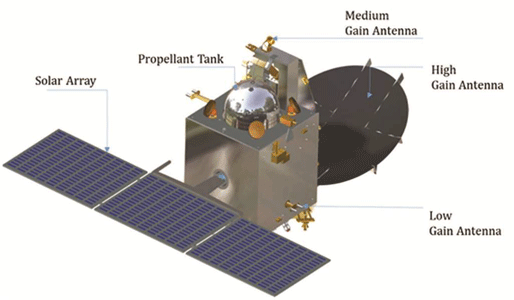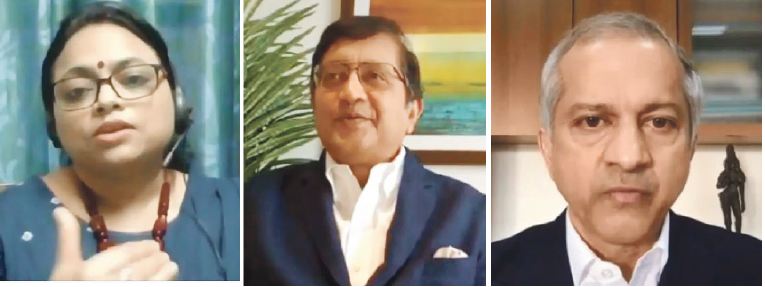INTERNATIONAL CENTRE GOA WEBINAR ON MAY 20, 2021: ‘The making of India’s rocket woman’ Dr Ritu Karidhal (left). She was in conversation with ICG’s vice-president Dattaraj Salgaocar (center) while the introductory welcome was by ICG president Yatin Kakodkar.
By Our Special Correspondent
FED up of the world? Want to escape to earth’s intriguing neighboring “red planet” Mars in to start another civilization? In future space voyages and life on Mars may well be in the realm of reality, assures ISRO (Indian Space Research Organisation) senior scientist Dr Ritu Karidhal Srivastava. She came across as a very affable woman of science while speaking on a webinar organized by The International Centre Goa in its latest Development Dialogue series on May 20, 2021. From the sound of it the present and the future is now about mastering webinars which are going places…as this one was virtually live on facebook.
Dr Ritu Karidhal is India’s popularly recognized “Rocket Woman,” for she played a key role in realizing the Mars Orbiter Mission (MOM)! It created history by becoming the first mission to reach Mars on its first attempt (other countries have tried but they failed several times before succeeding). For India’s mission it was a challenge like no other to get the software designed with mathematical precision in a satellite working on “four different built in levels of autonomy.” It’s all about the earth and Mars orbiting around the sun in deep space and there is something called “black out geometry and white out geometry.”
It was a fascinating and graphically illustrated talk in which Dr Ritu Karidhal described how success lies in team work every time and this they are proud to find at ISRO. She had been the mission director of the Chandrayan-2 mission and had carried out the operation from lift-off to moon landing. This time around too it was team work which worked for MOM right from the time their satellite left the earth’s orbit to capturing the Mars orbit at the right time – they succeeded in executing this critical operation and she quipped, “there are failures for everyone but we always learn from these failure so we succeed the next time.”
The crucial challenge for MOM was to make sure the satellite’s autonomy of built in systems dealt with any probable failures if they came up, yet “keeping the prime functioning undisturbed.” After all something, anything can go wrong out in deep space. It’s all about the dynamics of earth, deep space where other planets too like Mars spin around the central sun in different orbital pathways, it’s all about how to capture the precise moment in time and space to switch orbits to land anything, on Mars in this mission. She spoke of how much geometry of sun and earth is involved in understanding space science, about computers, satellites, monitors — if a fault crops up it has to be automatically isolated without disturbing the mission’s main goal.

Clearly, mathematical precision is of the essence in any space mission or adventure. The mission’s satellite performs in deep space on energy drawn from solar panels. After her talk Dr Ritu Karidhal responded to questions while in conversation with ICG’s Vice-President Dattaraj Salgaocar. He asked about future careers for students of space science and her response, “deep space is a space of unknowns.” There is phenomenal room for research in so many aspects, “this is space science or rocket science where the baseline is to look at lander, rover, orbiter, mishaps…look at foolproof systems and learn lessons.”
To another query she quipped, of course space research has an impact in other fields vis-à-vis innovations and benefits. For example, satellite science can lead to “fishermen being able to spot where the largest concentration of fish is in the ocean and go, get and come back!” Similarly satellite application is applicable in tele-communication, even farming, water resourcing, “multiple ways to handle disasters.”
In short, the sky is no longer the limit in space adventures of the future! She would welcome more bright young minds from Goa to come aboard to support ISRO’s many challenges ahead. According to her at ISRO they have a culture of meritocracy and teamwork rules, also “there’s no generation or gender gap!”
